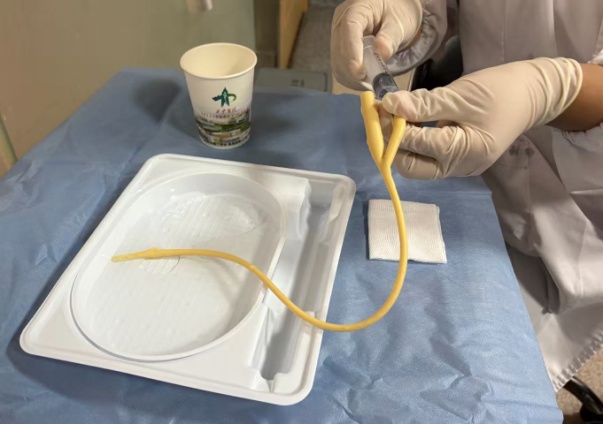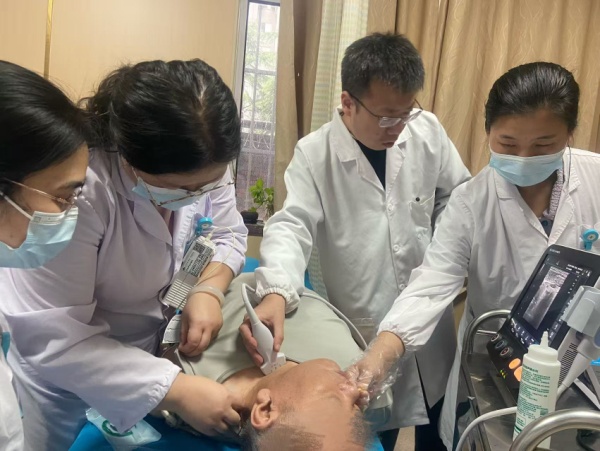Recently, the swallowing treatment team of the Department of Rehabilitation Medicine at the First Affiliated Hospital (FAH) of Xi’an Jiaotong University (XJTU) successfully completed its first case of botulinum toxin injection for cricopharyngeal achalasia under combined balloon dilation, ultrasound, and electromyographic (EMG) guidance.

The patient, a 63-year-old man, was admitted to the FAH with “dysphagia and gait instability for one month”. His cranial MRI performed at another hospital revealed medullary infarction. Although medication and rehabilitation training had significantly improved his gait, he continued to suffer from dysphagia and was unable to take food orally. He therefore sought further diagnosis and treatment at the FAH.
After admission, based on rehabilitation assessment and analysis of videofluoroscopic swallowing study (VFSS) findings, and following discussion with his family, physicians Peng Yu, Guo Jing, Pan Qizhi, and Song Siming performed a botulinum toxin injection for cricopharyngeal achalasia under combined balloon dilation, ultrasound, and EMG guidance.


The successful implementation of this technique demonstrates the enterprising spirit of the swallowing treatment team in the field of dysphagia and further highlights the comprehensive capabilities and strong team cohesion of the Department of Rehabilitation Medicine.

Cricopharyngeal dysfunction (CPD) refers to a functional disorder caused by spasm or improper relaxation of the cricopharyngeal muscle. Based on clinical symptoms, it is classified into anterograde CPD (A-CPD) and retrograde CPD (R-CPD), and A-CPD is a common cause of dysphagia in patients with brainstem infarction.
The technique of botulinum toxin injection for cricopharyngeal muscle dysfunction under combined balloon dilation, ultrasound, and EMG guidance harnesses the mechanical expansion of the balloon dilation to release local fibrotic tissue while enhancing the diffusion effect of botulinum toxin. This triple-guidance approach of combined balloon dilation, ultrasound, and EMG enables precise localization of the cricopharyngeal muscle for accurate injection, ensuring that the botulinum toxin is targeted to the diseased muscle bundles and thereby securing therapeutic efficacy. At the same time, precise localization helps avoid iatrogenic injury to adjacent nerves, blood vessels, and the thyroid, thereby reducing the risks of recurrent laryngeal nerve palsy and perforation. This approach maximizes therapeutic outcomes by ensuring both efficacy and safety.